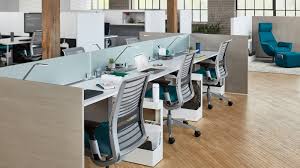Selecting the appropriate number of office chairs for your workspace is crucial for creating a functional and efficient work environment. The right quantity of office furniture not only ensures that employees are comfortably accommodated but also optimizes the use of available space. Here’s how to determine the right number of office chairs for your workspace, ensuring both comfort and productivity.
Assess Your Workspace Size
Begin by evaluating the size and layout of your workspace. Measure the dimensions of your office to understand how much space you have available. Consider the number of workstations or desks that will be set up, and ensure that there is enough room for office chairs without overcrowding the area. Adequate space is essential for allowing easy movement and maintaining a comfortable work environment.
Understand the Number of Employees
Determine the number of employees who will be using the workspace on a daily basis. For traditional office setups, you’ll need one office chair per workstation or desk. If you have a flexible working arrangement, such as hot-desking or shared workspaces, you may need fewer chairs than the total number of employees. Analyze your office dynamics to decide whether full-time, part-time, or rotating chair assignments are required.
Consider Different Workstation Types
Different types of workstations may require varying types and numbers of office chairs. For instance, if your office includes collaborative spaces, conference rooms, or breakout areas, you may need additional chairs to accommodate these functions. Ensure that each workstation has a chair that supports the type of work being done, whether it’s individual work, meetings, or casual collaboration.
Factor in Meeting and Collaboration Areas
In addition to individual workstations, consider the need for office chairs in meeting rooms and collaboration areas. If your office frequently hosts meetings or team discussions, having extra chairs available for these spaces is important. Ensure that these chairs are comfortable and suitable for prolonged use, as meetings can often extend for longer periods.
Account for Future Growth
When planning the number of office chairs, factor in potential future growth. If you anticipate hiring more employees or expanding your team, it’s wise to purchase a few extra chairs to accommodate new staff. Planning for future growth helps avoid the inconvenience of needing to purchase additional chairs on short notice and ensures that your office remains functional and efficient as it expands.
Evaluate Employee Preferences and Needs
Understanding the preferences and needs of your employees can influence the number of office chairs required. Consider conducting a survey to gather feedback on chair preferences, comfort requirements, and any special needs. This information can help you choose office chairs that meet the specific needs of your team and ensure that everyone has a comfortable and supportive place to work.
Review Office Layout and Flow
The layout and flow of your office space play a significant role in determining the number of chairs you need. Analyze how employees move through the workspace and how the placement of chairs affects this movement. Ensure that chairs are positioned to facilitate easy access to workstations and common areas without causing congestion or hindering movement.
Include Flexible and Multi-Use Seating
In addition to standard office chairs, consider incorporating flexible and multi-use seating options into your workspace. For example, stacking chairs, foldable chairs, or modular seating can provide additional seating when needed without taking up permanent space. These options are particularly useful for accommodating visitors, temporary staff, or special events.
Plan for Maintenance and Replacements
Keep in mind the need for maintenance and potential replacements when determining the number of office chairs. Office chairs experience wear and tear over time, so it’s practical to have a few extra chairs available for replacement or repair. Planning for this ensures that your office remains well-equipped and that employees always have access to functional seating.
Budget Considerations
Finally, consider your budget when determining the number of office chairs. High-quality office furniture can be a significant investment, so balance your needs with your financial constraints. Prioritize purchasing chairs that offer the best value for money while meeting ergonomic and functional requirements. Investing in durable and comfortable office chairs can reduce long-term costs associated with replacements and repairs.
Determining the right number of office chairs for your workspace involves careful consideration of the size of your office, the number of employees, the types of workstations, and future growth. By evaluating these factors, understanding employee needs, and planning for maintenance and budget, you can create an efficient and comfortable work environment that supports productivity and well-being.







